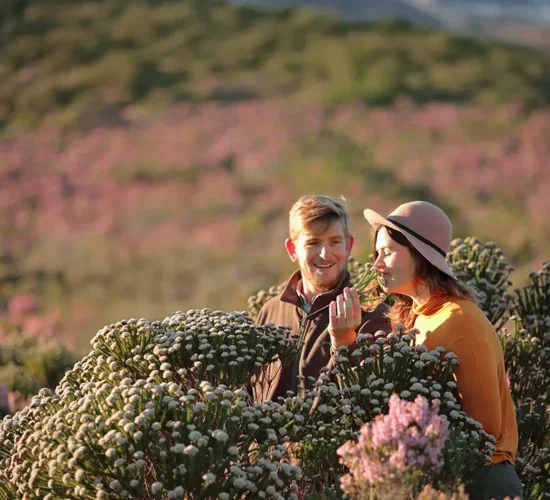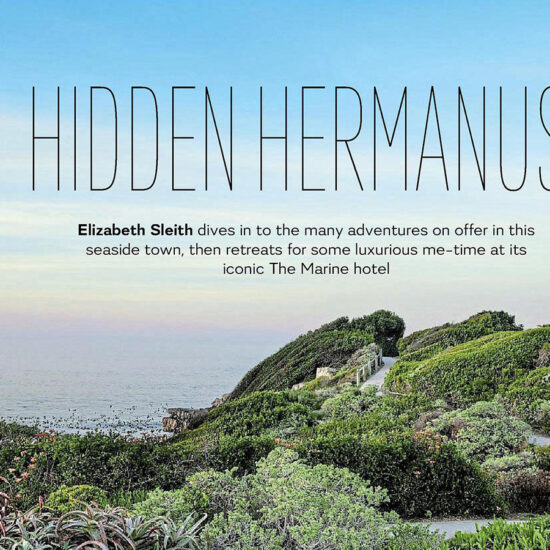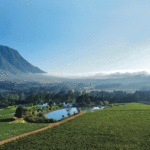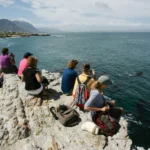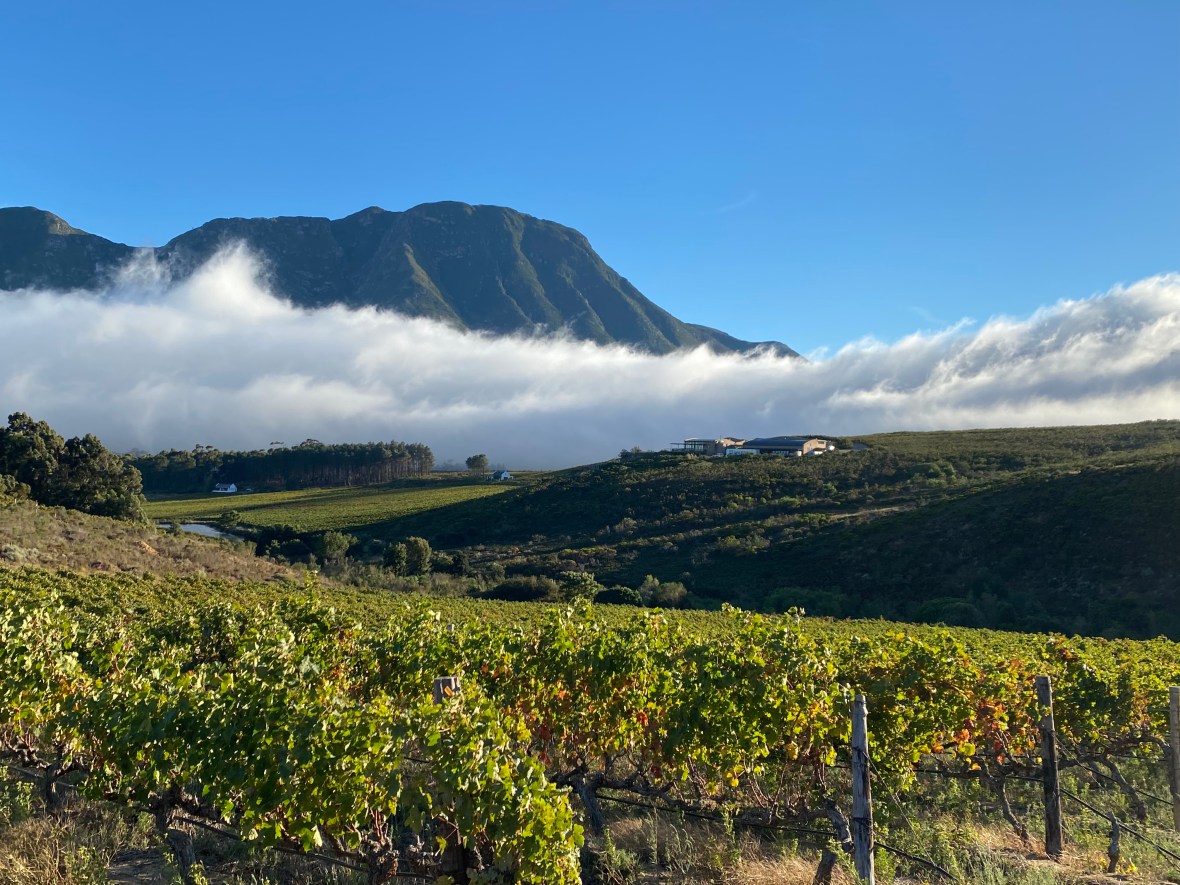
Swap Stellenbosch for this underrated South African wine region
The Hemel-en-Aarde valley, 90 minutes from Cape Town, is one of the country’s most beautiful areas with fewer crowds and stays that are half the price of the more touristy wine routes
“Quick, wind your window up,” my dad would call from the driver’s seat as a plume of red dust threatened to engulf our hire car as it trundled along the gravel road. Since the late Nineties this has been our annual ritual on the hot, sleepy drive from Cape Town to Caledon, a town in the Overberg region of the Western Cape, where my aunt lives.
As we’d turn off for the slow and rough final stretch, along a 22-mile undulating road running through a rugged valley called the Hemel-en-Aarde, I would barely take any notice of the scenery. The gravel road was a chance for a kip ― albeit a bumpy one — before being grilled by my South African family over a braai. But, though it took me a while to realise it, this is in fact one of South Africa’s most beautiful wine regions, and now, 25 years later, I’m giving it the appreciation it deserves.
Hemel-en-Aarde means “heaven and earth” in Afrikaans, and the title is justified — the hills that hug the valley are so high you can see nothing but sky beyond. This lesser-known wine region is about 90 minutes’ drive southeast of Cape Town, behind the historic seaside town of Hermanus, between the Klein river and Babilonstoring mountain range, surrounded by nature reserves, with distant views of Walker Bay. The best bit? Unlike the busy wine routes of Franschhoek, Stellenbosch and Paarl, it’s mostly empty of cars and people. And after a week spent introducing my partner, Jonny, to all my family and friends in Cape Town ― my dad grew up in the southern suburbs — it is exactly what we need.

The Spookfontein wine estate, Hemel-en-Aarde
The drive alone is worth it. We take the scenic route from Cape Town along Clarence Drive, also known as the start of the Overberg whale route — a long ocean road that runs just above the Atlantic shoreline, with frequent viewpoints where you can spot marine wildlife, including southern right whales and humpbacks from June to November, when they come into shallow waters to give birth. It adds only about 30 minutes to the journey — allowing for several stops to make way for baboons in the road — but we get to see a little more of the Western Cape’s unbounded coastline, passing through Gordon’s Bay Harbour, turning off at Betty’s Bay to show Jonny the jackass penguin colony at Stony Point, and a padkos (traditional Afrikaans road food such as biltong and sandwiches) pit stop at a secret surfers’ beach called Dappat se Gat.
As we turn onto the Hemel-en-Aarde the view is of endless vines and earthy farmland, contained by chalky blue mountains and the odd glistening dam. The road is quiet and surprisingly smooth having finally been tarred a few years ago.
We’re staying on the Hemel ‘N Aarde Stud Farm, where David Hepburn-Brown, the owner, has a team of healthy racehorses, plus a farm cottage and three luxury eco-cabins for rent. Guinea fowl scatter across the dusty track on the way to our secluded cabin Jay Peg, named after one of Hepburn-Brown’s famous horses.
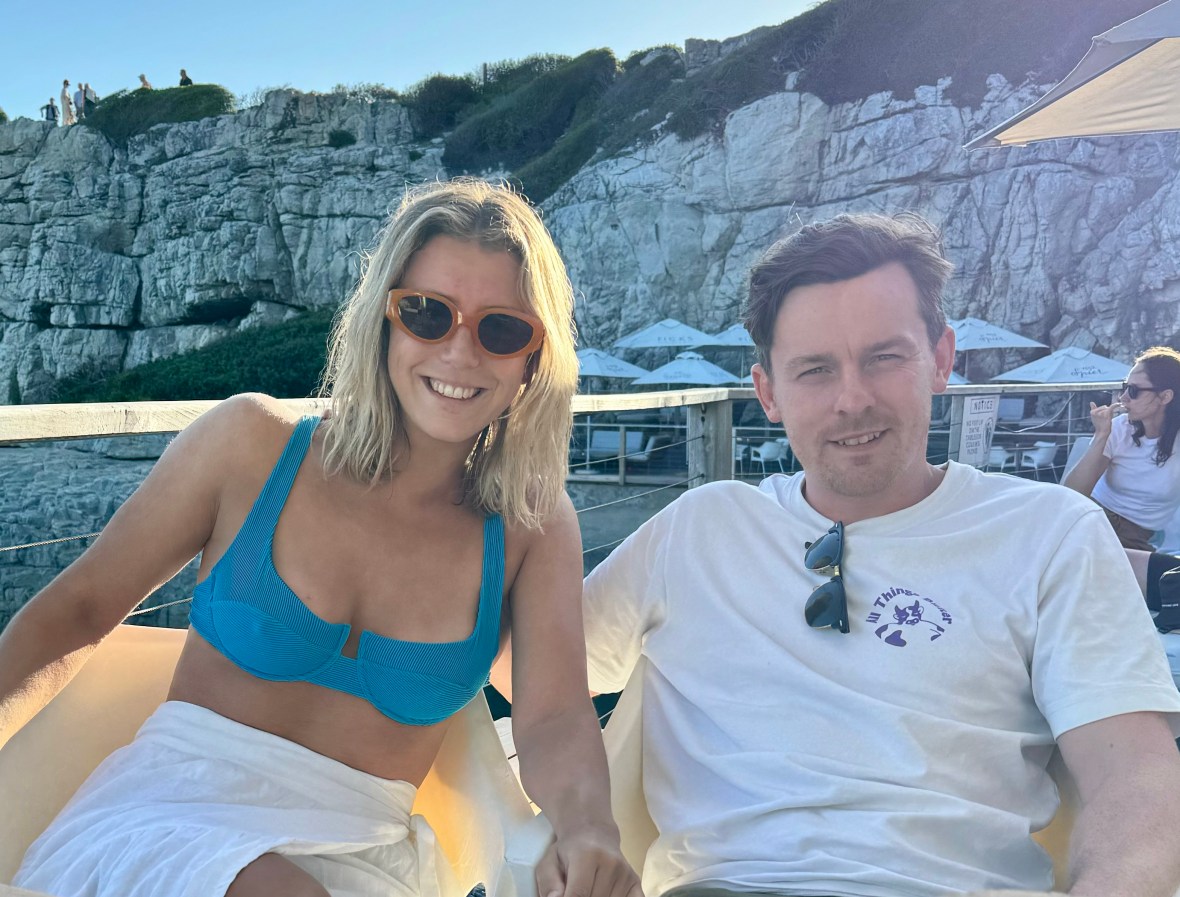
Sidonie and Jonny at Ficks, Hermanus
Many of the local farms have a similar offering (see below) ― and they are mostly great value. Our open-plan cabin has an en suite bathroom, a wood-fired hot tub and baskets of braai wood, plus it’s dual aspect, so we can catch sunrise and sunset. On one side the decking has an outdoor shower with views over the farm and distant hills. A freestanding bath with fynbos (local heathland vegetation indigenous to the Cape) salts beckons me to climb in with a glass of wine, watching the cattle egrets peck at the feeding horses, and foals frolicking as the sun goes down.
For the price I expect to be shovelling hay to earn my keep. It’s true, the weakness of the rand makes our pounds stretch far here, but it’s also half the cost of accommodation in Stellenbosch. And what bliss that price buys us: a rustic farm getaway with just the right balance of impeccable service and attention to detail. Sue Catts, the farm’s accommodation manager, guides us with restaurant bookings and local tips — where to walk, where to rent mountain bikes, the must-visit wine estates and her favourite cooling-off spot, in the farm’s dam. She even provides emergency paracetamol when we get overexcited on the pinot noir.
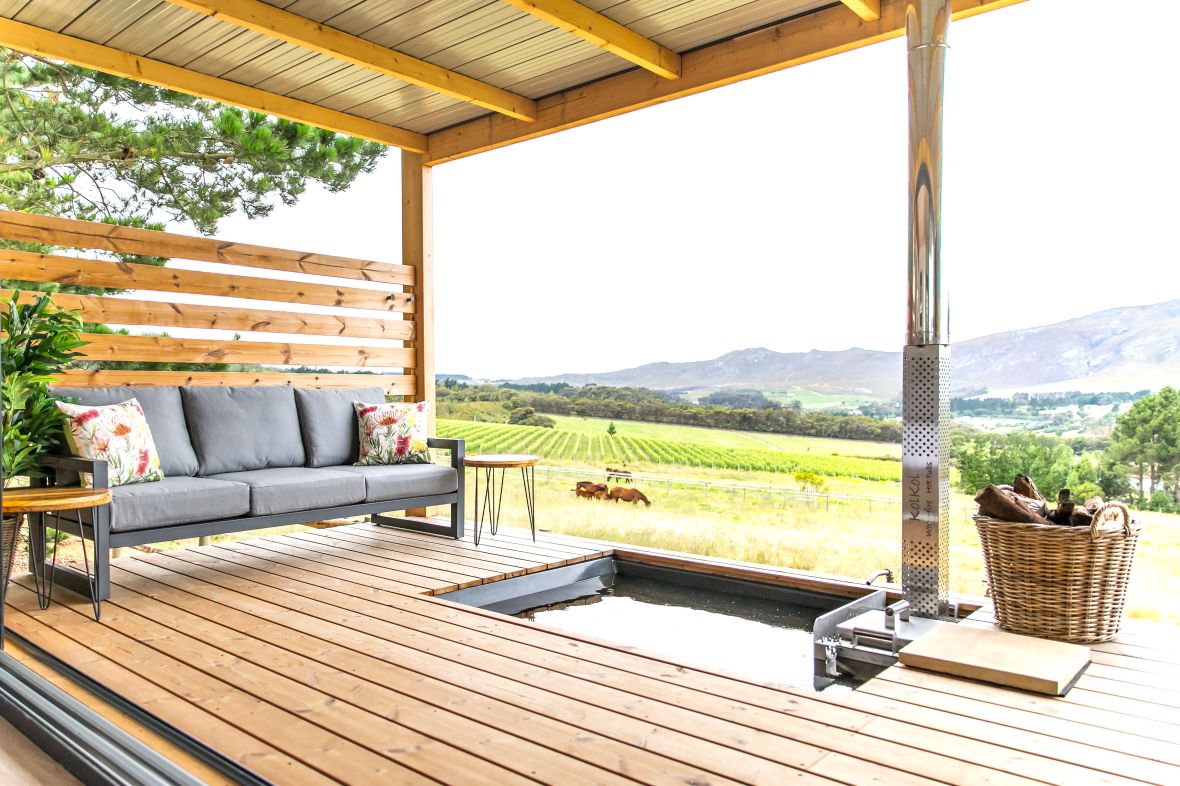
The Hemel ‘N Aarde Stud Farm
She books us in for lunch at Moggs — popular among locals — so we decide to walk there and work up an appetite. A track runs between the back of the farms and the bottom of the hills (leading onto one of the area’s many hiking trails), passing farmers and plenty more foals, fowl and a rainbow of fynbos. After about an hour’s walk (or a ten-minute drive) we emerge from dusty, open farmland into the garden oasis that is Moggs Country Cookhouse
Our table is beneath a canopy of trees, where chatter and birdsong accompany our enjoyment of the delicious, seasonal menu. Julia Mogg, the owner, appears a little frantic coming from the kitchen, but the food delivers — a beetroot fritter starter followed by flaky, buttery parsley and sesame-crusted line fish, intricately decorated with flowers from the garden.
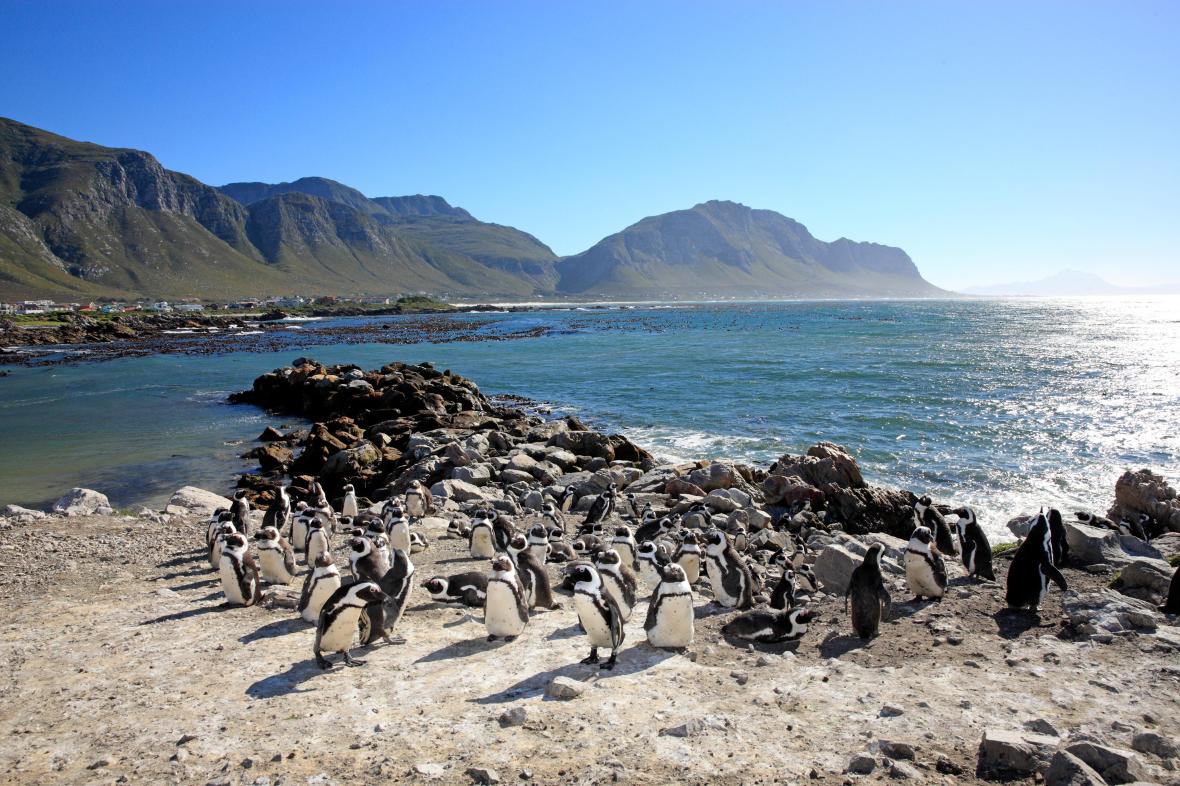
Jackass penguins at Stony Point
That afternoon we break out from the enchanting valley and head to the seaside town of Hermanus, a 20-minute drive away. I want to show Jonny where I spent years of family holidays building boats out of sand on Grotto beach, picking mussels with my aunt and clambering around the rock pools as my uncle dived for crayfish for our evening braai.
Best known for its whales, Hermanus is surrounded by long stretches of white, sandy beaches that attract kite surfers. Hermanus was always a little sleepy, but now it has an abundance of good foodie spots, arty shops, weekend markets, and proximity to ocean walks and outdoorsy days in the Fernkloof Nature Reserve.
After a refreshing swim in the turquoise waters at Grotto beach we go for a sundowner at Ficks, a fairly new spot recommended by my cool cousin in Cape Town. I try a dry rosé from the nearby Gabrielskloof estate (£10 per bottle) and we munch on its “pinchos” offering of fresh oysters and crispy prawns, with a view of the setting sun, the 1930s tidal pool and endless shimmering oceans (pinchos from £2; ficks.co.za).
Following my family’s No 1 rule when visiting South Africa — not to drive after dark (to avoid animals and bad drivers) — we race the sun back to our little cabin on the stud farm for a relaxing evening in the hot tub, beneath the stars.
The next day is dedicated to wine. More specifically, to pinot noir and chardonnay, which the valley is best known for. Heavy clay soils and cool sea air make for the ideal climate for these grapes — similar to that of Burgundy. The valley is split into three appellations (largely based on different soil types), home to just over a dozen wine estates — most have tasting rooms, some more formal restaurants and accommodation.
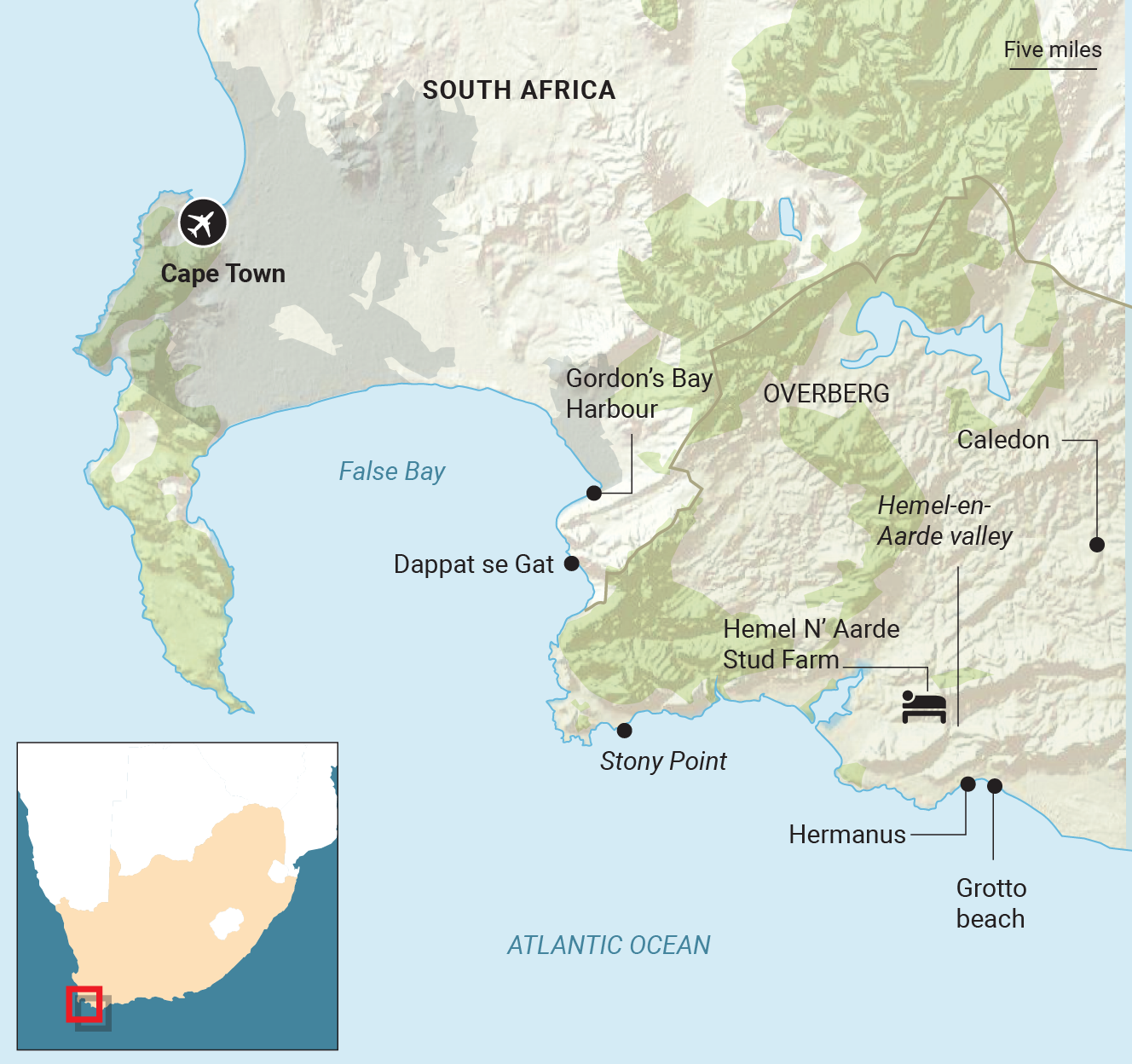
Visitors can do a hop on, hop off safari-style tour of the valley (£20pp; winehoppers.co.za) ― Hemel-en-Aarde’s answer to the popular Franschhoek wine tram — or book a private car for the day (about £16; hermanustaxi.com). But we decide to do things in our own time, with Jonny as designated driver and me as navigator and chief taster. The close proximity and laid-back nature of the valley’s estates make it easy for us to stop off and pop into whichever takes our fancy.
First stop is the award-winning Creation estate at the top of the valley (creationwines.com). Its terrace overlooks the Hemel-en-Aarde ridge, where we kick things off with a breakfast wine pairing (yes, it’s a thing). Jonny tries the poached egg with spinach and goat’s milk cheese and tastes a little of the chic paired chardonnay (£7.30), and I have a posh version of sardines on toast, washed down with a generous glass of the semillon sauvignon blanc (£6.50) — elevenses never tasted so good.
The day unfolds as we make our way down the valley, dropping in for a wander at all the notable estates — Bouchard Finlayson, Spookfontein, Newton Johnson, and the oldest in the valley, Hamilton Russell. Each has its own versions of Cape Dutch buildings, bougainvillea-draped stoops and acres of rolling vines, and wine tastings usually cost about £3, the fee typically waived with any purchase.
The valley is at its best ― we’re here during harvest, so the vines are changing colours and the farms are bustling with life and anticipation of a good yield. One of the younger estates, Ataraxia, which opened in 2004, has a quaint chapel tasting room that sits dramatically on the most elevated part of the valley (ataraxiawines.co.za). The baby of the valley is Hasher, a more modern European-style affair that opened its tasting room in December and is known rather for fine, but not stuffy wines (still only about £16 a bottle). The estate’s manager, Sasha van Zyl, hands me a glass of the Batrachella pinotage and invites us to peer through the harvest room, where the all-female winemakers manoeuvre crate after crate of ripe, juicy grapes (hasherfamilywines.co.za).
Jonny and I leave the area feeling like wine buffs as we reluctantly drive back to Cape Town with a boot full of rattling bottles and a lasting image of Hemel-en-Aarde’s beauty. This time our windows are down and my eyes are wide open.
Where to stay on the Hemel-en-Aarde wine route
1. Stonehaven Eco Cabins
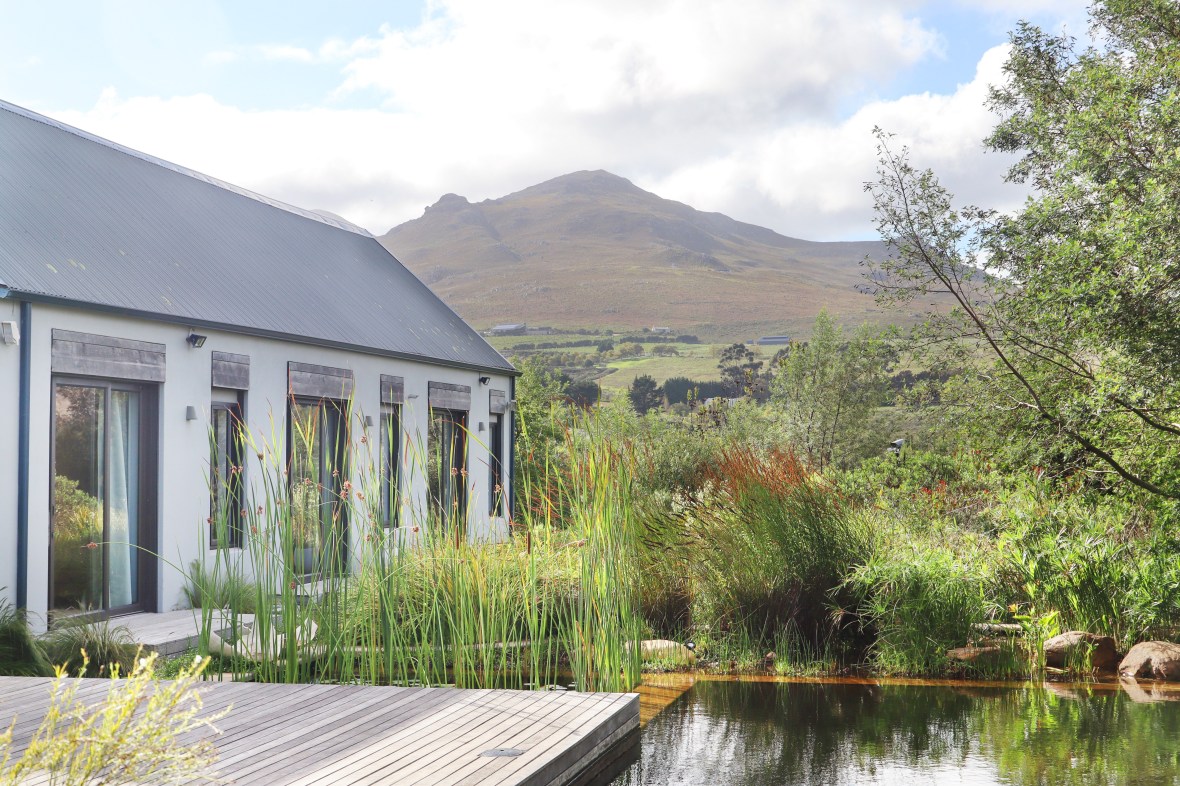
Stonehaven Eco Cabins
Right beside the De Bos Dam, Stonehaven has a farmhouse that sleeps eight to rent along with three self-catering eco-luxe cabins aptly named for their views: Heaven, Earth and Stars. The owners, Kathy and David, have tried to keep it as natural-looking as possible, so the cabins are hidden within the surrounding fynbos. The proximity to the dam makes it a great spot to swim and kayak when the weather’s mild, and there are indoor fireplaces and wood-fired hot tubs on the deck to warm up guests in winter. The meandering Protea Walk here is a peaceful path set out by the hosts, named after South Africa’s national flower (of which there should be lots to spot en route). It’s a working farm, with 16 acres of fruit orchards, vegetables, herbs and aromatherapy gardens. Mountain bikes and canoes are available to use free of charge.
2. Voormanshuis at Creation Wines
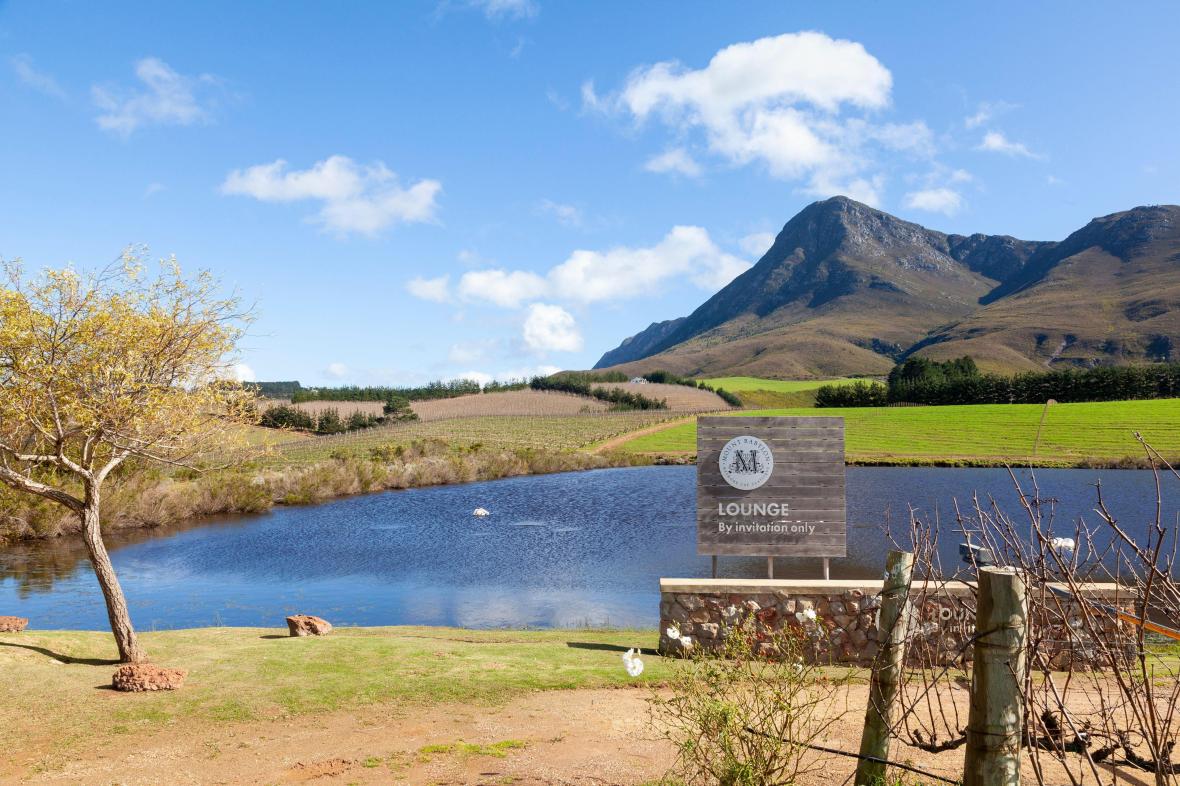
The Creation Wine Estate
Set within the ridge region of the valley is Voormanshuis on the Creation Wine Estate, where guests have award-winning bottles on the doorstep. The accommodation is at the smarter end of the scale — cowhide rugs, vintage furniture paired with modern, slick interiors — but the luxury is farm-style, with a fully equipped kitchenette, firewood for the braai and mountain bikes. The restaurant offers breakfast, lunch and dinner, or guests can order food packs. Wine is the focus, but the food is sublime, such as duck breast with edamame, fennel and pistachio gremolata
3. The Guardian
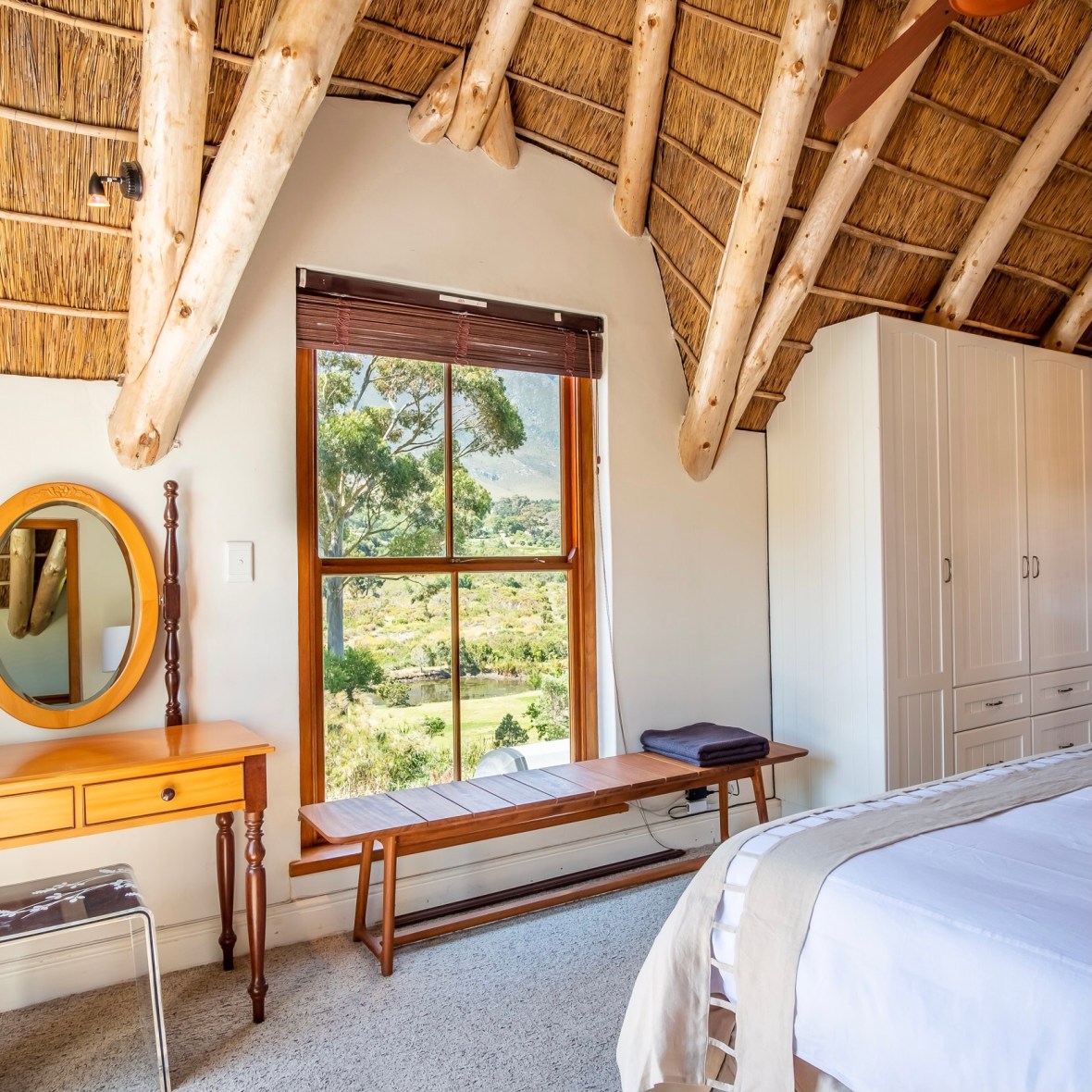
The Guardian
Great for bigger groups, the Guardian has two self-catering options on a discreet 25-acre estate, immersed in the nature of the valley. A luxurious cottage sleeps four, an apartment two, and both come with private gardens, braais and a shared 16m pool. It’s close to lots of the top wine farms and only a 15-minute drive to Hermanus’s cliff paths, beaches, golf course and tidal pools.
Sorry, the comment form is closed at this time.

